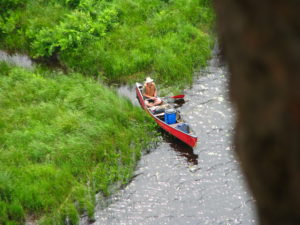When Two Trails Merge

To view the photo-rich magazine version, click here.
Originally appears in the Winter 2019 issue.
ONE OF THE NOTICEABLE changes this century in environmental education has been an increasing embracing of the need to go beyond just orchestrating great programs. We now realize that awareness and understanding only lead to action when we care enough about something to act — people protect what they have grown to love. An emotional attachment to nature and wild places can be simultaneously nurtured through environmental education and outdoor play and recreation. Since some types of outdoor recreation are linked to environmental activism, environmental educators can increase their effectiveness by simultaneously encouraging youth to be involved with outdoor recreation.
Benefits of outdoor recreation
Developing realistic fear expectations
Environmental educators working in natural settings with children on field trips are vividly aware of the differences in comfort levels among their students. Some students are comfortable, while others express fears of exotic animals, snakes, insects, and becoming lost. Some urban students may even express fears of the stars in the sky on their first camping trip away from the always-illuminated city streets where they live. These reactions are mostly a function of a lack of repeated experience in wild and semi-wild environments.
This content is restricted to subscribers only.
If you are not yet a subscriber, please consider taking out a subscription here.
If you are an existing subscriber, kindly log in or contact us at info@greenteacher.com for more information.





